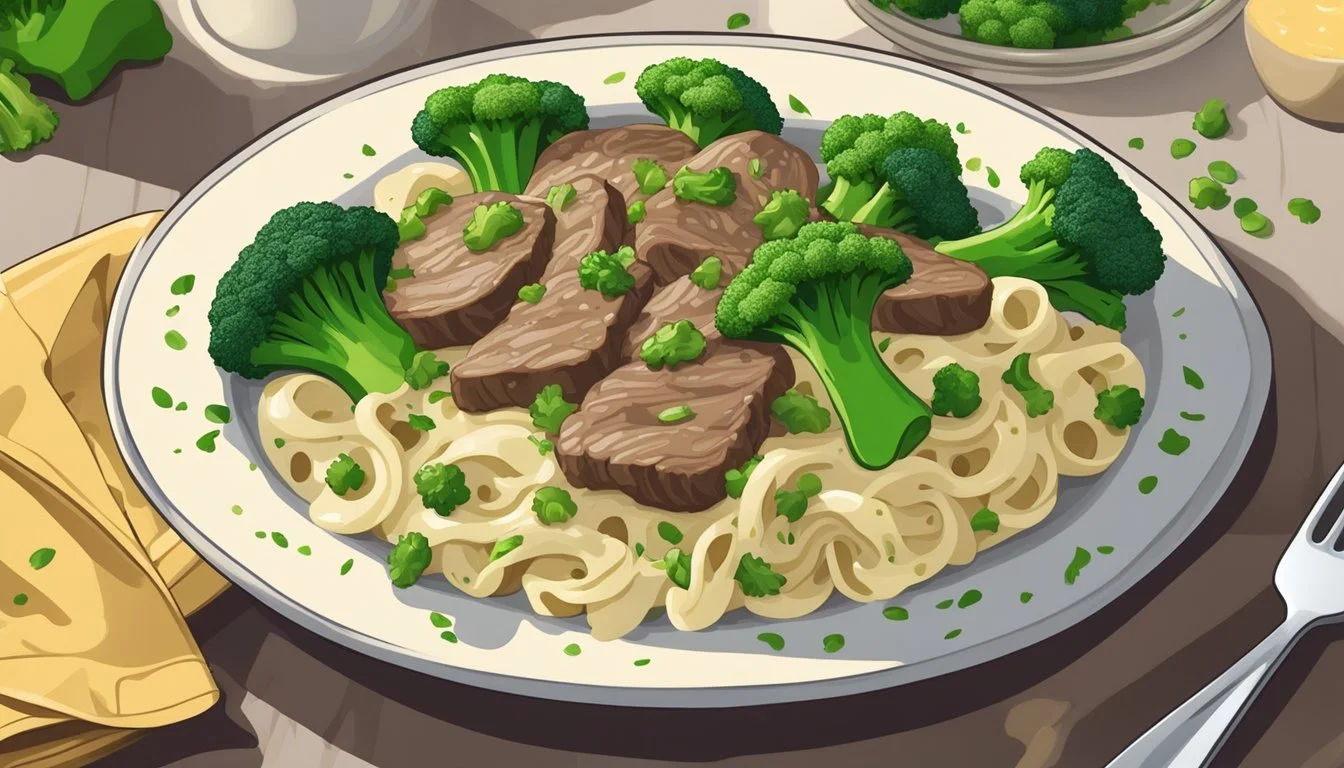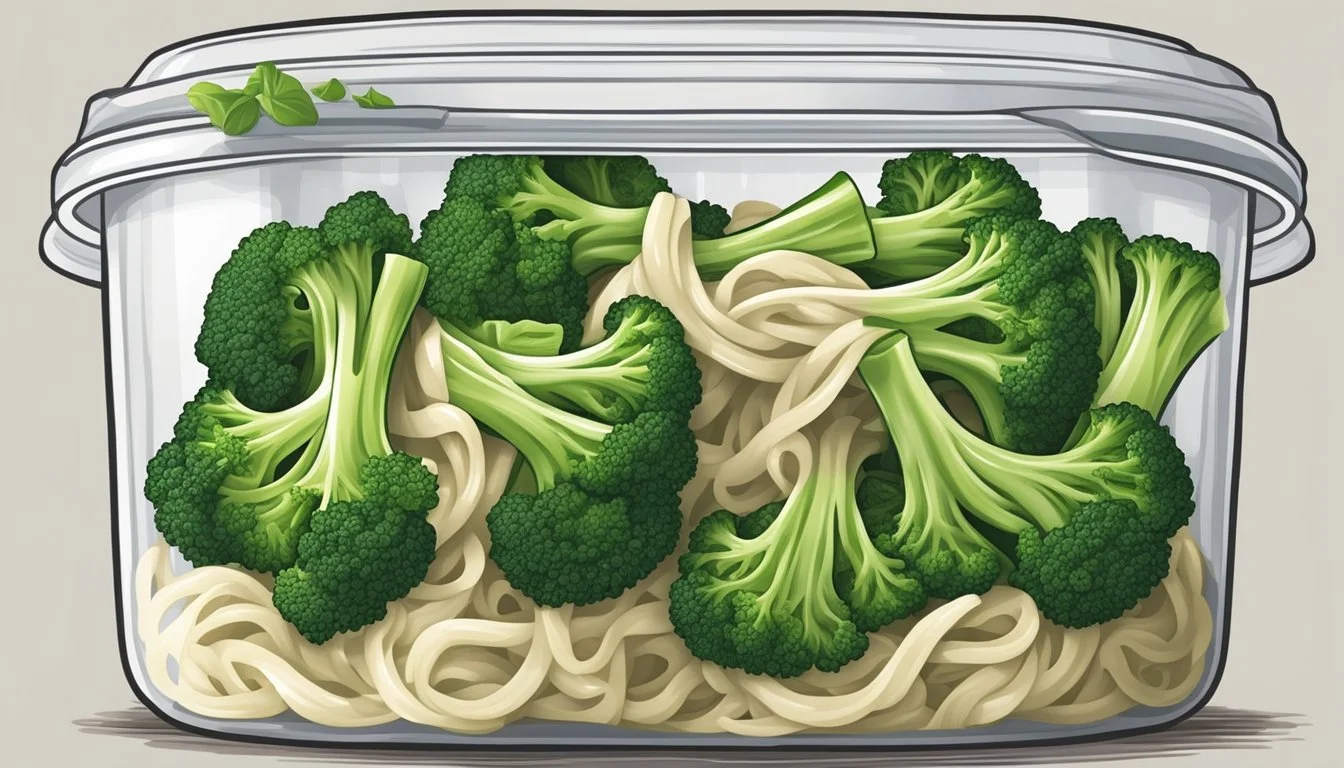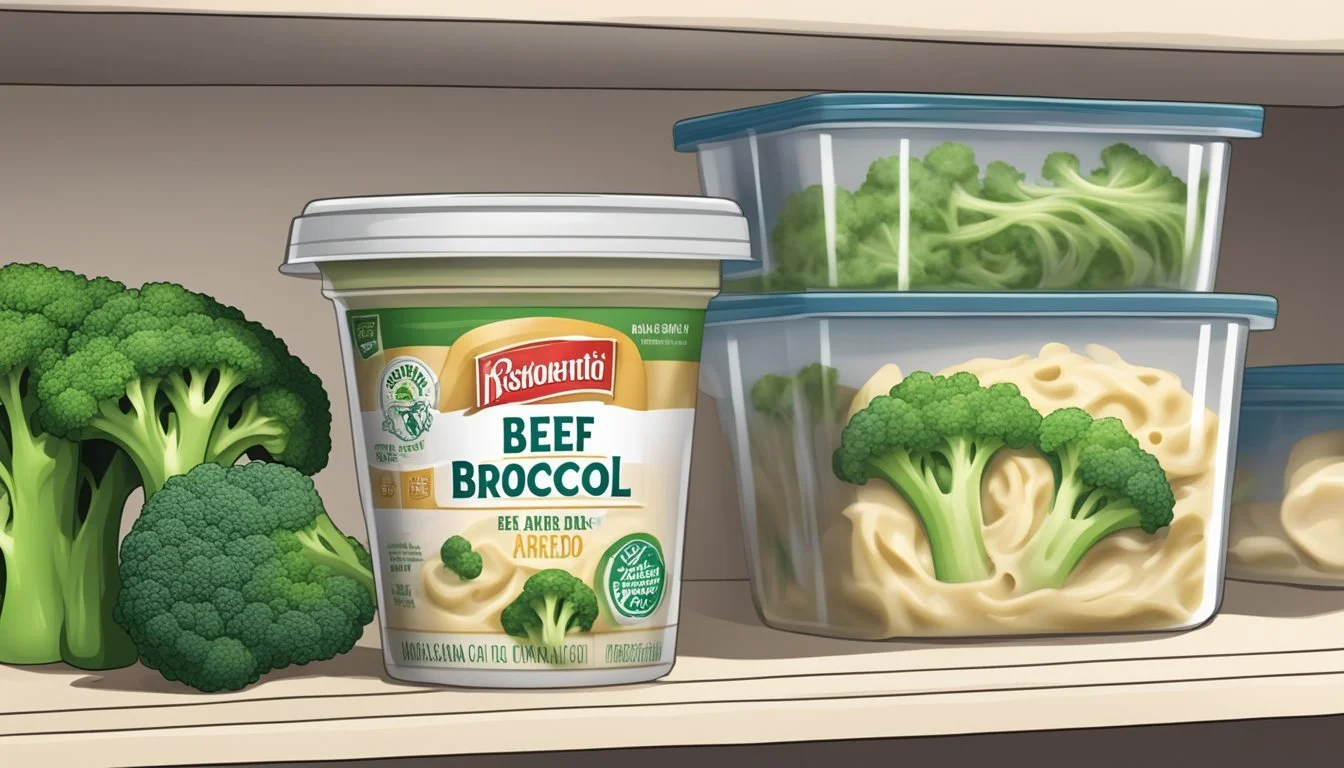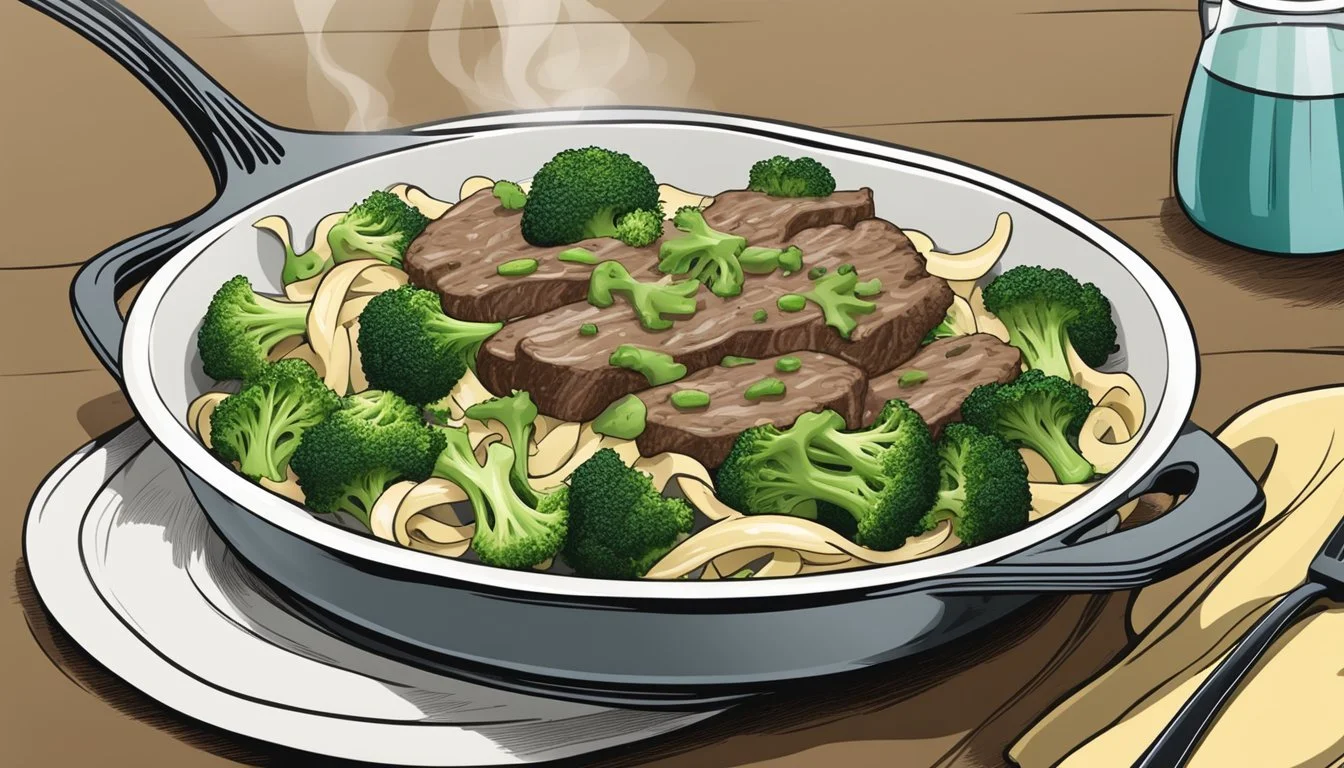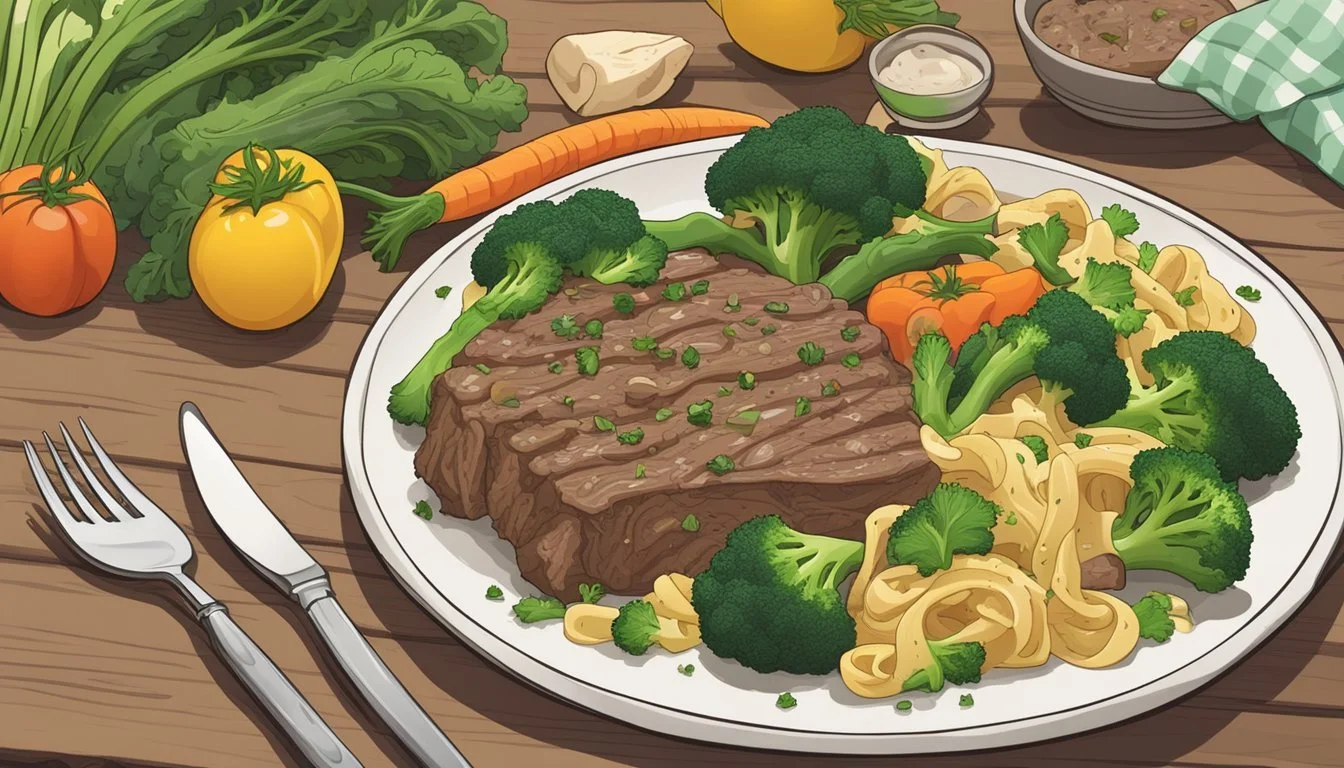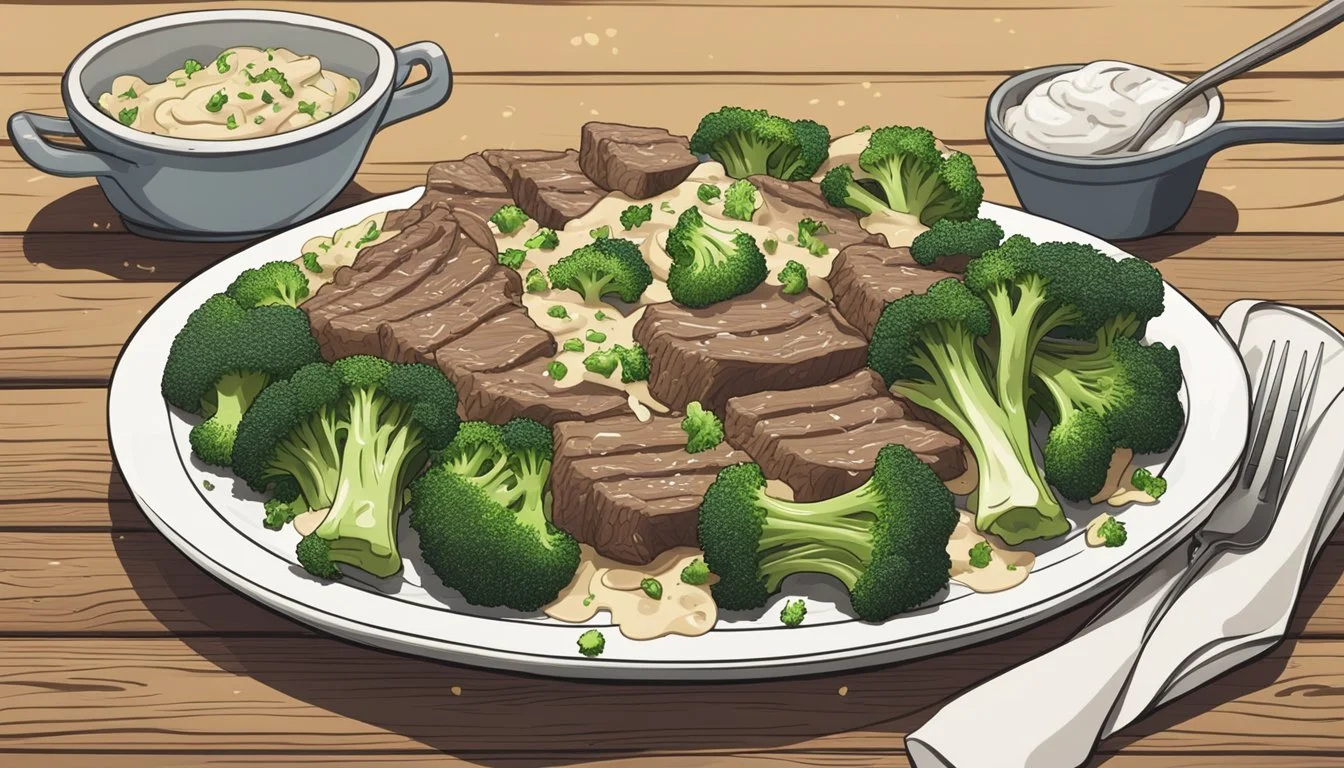How Long Does Beef and Broccoli Alfredo Last?
Storage Tips and Shelf Life
If you've ever made a delicious Beef and Broccoli Alfredo, you might wonder how long it will last in your fridge. Whether you enjoyed it for a cozy dinner or have leftovers, knowing its shelf life ensures you relish every bite without worry. Proper storage is key to maintaining its taste and safety.
Beef and Broccoli Alfredo can last in the refrigerator for 3-4 days when stored in an airtight container. This time frame is crucial to prevent any spoilage and retain the delightful flavors of your dish. If you don't plan to eat it within this period, consider freezing it to extend its lifespan.
Storing your Beef and Broccoli Alfredo correctly is as important as making it. Make sure to cool it down before refrigerating and reheat only the portion you intend to eat to maintain its texture and taste. This way, you can enjoy your meal without compromising quality.
Understanding Beef and Broccoli Alfredo
Beef and Broccoli Alfredo combines rich, creamy flavors with hearty ingredients such as beef, broccoli, and pasta. This dish is a variation of traditional fettuccine alfredo, featuring a balance of protein, vegetables, and a luscious cream sauce.
Components of the Dish
Beef and Broccoli Alfredo is made with tender pieces of beef, usually sautéed until browned. These pieces of beef are paired with broccoli, which adds a fresh, healthy crunch. The beef and broccoli are combined with pasta, typically fettuccine, which is coated in a decadent cream sauce. The key component, the alfredo sauce, is made from a mixture of cream, butter, and parmesan cheese. This sauce provides a rich and creamy texture that complements the savory beef and the slightly bitter broccoli. Seasonings such as garlic, salt, and black pepper enhance the overall flavor.
Typical Ingredients
The primary ingredients for Beef and Broccoli Alfredo include:
Beef: Often thinly sliced or diced for quick cooking.
Broccoli: Cut into small florets for uniform cooking.
Pasta: Fettuccine is traditional, but other types of pasta can be used.
Cream Sauce: Composed of heavy cream, butter, and parmesan cheese. Sometimes flour is added to thicken the sauce.
Seasonings: Garlic, salt, and black pepper are commonly used.
In addition, some recipes might include elements like soy sauce or oyster sauce for an Asian twist, or sherry for added depth.
Variations and Additions
There are several variations to Beef and Broccoli Alfredo. Vegetables like mushrooms, bell peppers, or carrots can be added for extra nutrition and flavor. For those wanting a lighter version, milk or a milk-cream blend can replace heavy cream. Cheese aficionados might mix different types of cheese like mozzarella or asiago for a unique twist.
Another common modification involves the type of pasta. While fettuccine is classic, penne, spaghetti, or rotini can also be used based on personal preference or availability. Some might also adjust the seasoning by adding herbs like basil or parsley for an Italian flair or incorporating spice mixes for added heat.
Preparation and Cooking
This section provides a detailed guide on making Beef and Broccoli Alfredo. It focuses on ingredients, prep time, cook time, and cooking techniques. Attention to detail ensures a delicious and creamy dish.
Recipe Overview
To make Beef and Broccoli Alfredo, gather the following ingredients:
Ground beef: 1 lb
Broccoli florets: 2 cups
Fettuccine: 12 oz
Unsalted butter: 2 tbsp
Heavy cream: 1 cup
Half and Half: 1 cup
Grated Parmesan cheese: 1 cup
Garlic powder: 1 tsp
Ground black pepper & Red pepper flakes: to taste
Parsley (optional): chopped, for garnish
Prep time is around 15 minutes. Cook time is approximately 25 minutes, making the total time 40 minutes.
Cooking Techniques
Heat a large pan over medium heat.
Add ground beef, breaking it apart as it browns.
Preparing the Broccoli:
Steam broccoli for about 5-7 minutes until tender.
Alternatively, sauté it in the pan after removing the beef.
Making the Pasta:
Boil fettuccine according to package instructions.
Drain and set aside.
In a saucepan, melt unsalted butter over medium heat.
Add heavy cream and Half and Half, stirring frequently.
Mix in grated Parmesan cheese, garlic powder, and seasonings.
Combining Ingredients:
Blend the beef, broccoli, and sauce in the pan.
Add cooked fettuccine and toss until well-coated.
Garnish with chopped parsley.
This method ensures that each component is perfectly cooked and the Alfredo sauce is creamy and rich.
Proper Food Storage
Maintaining the quality and safety of beef and broccoli Alfredo involves proper refrigeration, freezing, and using airtight containers. These steps help prevent harmful bacteria growth and ensure the dish remains safe to eat.
Refrigeration Best Practices
Refrigerating beef and broccoli Alfredo promptly is crucial. After cooking, make sure it cools to room temperature within two hours. Store it in the fridge set to 40°F (4°C) or below to inhibit bacterial growth. Storing the dish quickly minimizes the risk of cross-contamination with other foods.
Use airtight containers to keep moisture and other contaminants out. Label these containers with the date to keep track of storage time. According to food safety guidelines, this dish can safely be refrigerated for 3 to 4 days.
Rules for Freezing
When freezing beef and broccoli Alfredo, time and temperature are critical. Cool the dish promptly after cooking, then transfer it to the freezer, which should be set to 0°F (-18°C) or lower. Using airtight containers or freezer-safe bags helps prevent freezer burn and maintains food quality.
For best results, avoid freezing in large portions. Opt for single-serving sizes to ensure even freezing and easier reheating. Beef and broccoli Alfredo can be frozen for up to 2-3 months, but for optimum taste and texture, it is best consumed within one month.
Airtight Containers
Airtight containers play a vital role in proper food storage. They reduce the risk of cross-contamination and maintain food moisture levels. Select containers specifically designed for food storage, ensuring they are labeled as microwave and freezer safe.
Proper sealing techniques are essential. Make sure the lid fits snugly and there's no room for air to enter. For added protection, consider double-wrapping the container with plastic wrap before sealing. Always label containers with contents and storage date to monitor freshness and ensure food safety.
Shelf Life Considerations
When it comes to beef and broccoli alfredo, it's important to understand the factors that influence its shelf life, how to determine its freshness, and identify the signs of spoilage.
Determining Freshness
The shelf life of beef and broccoli alfredo primarily depends on storage conditions. At room temperature, it should be discarded after 2 hours to prevent bacterial growth. In the refrigerator, it typically lasts 3 to 5 days.
Using a food thermometer, ensure that the dish has been cooled to below 40 degrees Fahrenheit within two hours of cooking. Proper packaging in airtight containers can also extend its freshness.
Blanching broccoli before combining it with beef and alfredo sauce can further enhance the overall lifespan by reducing bacterial contamination.
Signs of Spoilage
The first indicator of spoilage is an off smell. If the aroma is sour or rancid, the dish should be discarded immediately. Discoloration of the beef, such as turning gray or green, and mold growth on any part of the dish are clear signs that the food is no longer safe to eat.
Texture changes like excessive mushiness or sliminess also suggest spoilage. Lastly, be wary of foodborne illnesses; if there's any doubt about the safety of the beef and broccoli alfredo, it is best to err on the side of caution and discard it.
Reheating and Serving
When reheating Beef and Broccoli Alfredo, the goal is to preserve its creamy texture and rich flavors while ensuring it's hot and safe to eat. Specific methods and tips can help maintain its quality and taste.
Best Methods to Reheat
For the microwave, place the Beef and Broccoli Alfredo in a microwave-safe dish. Cover it loosely with a microwave-safe lid or wrap to retain moisture. Heat on medium power for 2-4 minutes, stirring halfway through to ensure even heating. Let it sit for a minute before serving to distribute the heat.
Using an oven offers a more even reheat. Preheat the oven to 300°F (150°C). Transfer the Alfredo to an oven-safe dish, cover it with foil to prevent drying out, and heat for 15-20 minutes until hot. Stir occasionally if possible to maintain consistency.
Maintaining Quality and Taste
To keep the Alfredo creamy and avoid dryness, add a splash of milk or cream before reheating. This helps maintain the sauce's texture. When reheating, it's essential to avoid high temperatures, which can cause the sauce to separate and the broccoli to become soggy.
Serve immediately after reheating for the best taste and texture. Ensuring a quick serve helps keep the broccoli crisp and the beef tender. Pay attention to the nutritional information and calorie content, as excessive reheating can degrade nutrients.
Stirring during the reheating process is crucial. It helps distribute heat evenly and prevents scorching, particularly with thicker sauces. Following these tips can ensure that your Beef and Broccoli Alfredo remains delicious and nutritious when reheated.
Health and Nutrition
Beef and Broccoli Alfredo combines hearty beef, nutritious broccoli, and creamy Alfredo sauce, making it a satisfying meal. Understanding its nutritional content is essential for those mindful of their diet.
A typical serving of Beef and Broccoli Alfredo can vary in calories, but on average, one serving contains anywhere from 450 to 600 calories. This depends on the specific ingredients and portion sizes used.
Macronutrients per serving:
Protein: Approximately 25-35 grams
Carbohydrates: Around 40-50 grams
Fat: Roughly 20-30 grams
Broccoli is a nutrient-rich vegetable, adding fiber, vitamins C and K, and folate to the dish. Including broccoli helps balance the meal by adding antioxidants and reducing overall calorie density.
Nutritional highlights:
Calcium from the Alfredo sauce, benefiting bone health.
Iron from the beef, supporting red blood cell production.
Fiber from broccoli, aiding digestion and increasing satiety.
For those monitoring sodium intake, it's important to note that Alfredo sauce can be high in sodium, with one serving containing anywhere between 600-800 mg. Choosing reduced-sodium options or making homemade sauce can help manage this.
Serving sizes typically depend on individual dietary needs, but a common portion is around 1.5 to 2 cups per person. Adjustments can be made for those with specific nutritional goals, such as reducing calories or increasing protein for muscle maintenance.
Being mindful of portion sizes and ingredient choices can make Beef and Broccoli Alfredo a balanced and enjoyable meal.
Practical Tips and Tricks
Storing and reheating Beef and Broccoli Alfredo can be straightforward with a few thoughtful modifications. Consider adding some fresh ingredients and being mindful of storage and reheating techniques for optimal results.
Quick and Easy Modifications
When making Beef and Broccoli Alfredo, consider quick and easy tweaks for freshness. For example, using fresh parsley or a dash of cayenne can enrich the dish's flavor profile. If you have ham on hand, adding it to your alfredo can create a diverse and tasty meal.
Another quick tip: try fettuccine pasta instead of regular noodles for a richer experience. Store leftovers in an airtight container to maintain freshness. Reheat with a bit of water or broth to maintain moisture without losing texture. This maintains the integrity of the beef and broccoli and makes for a delicious next-day meal.


